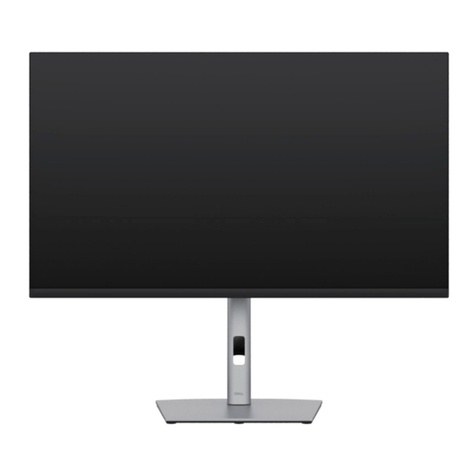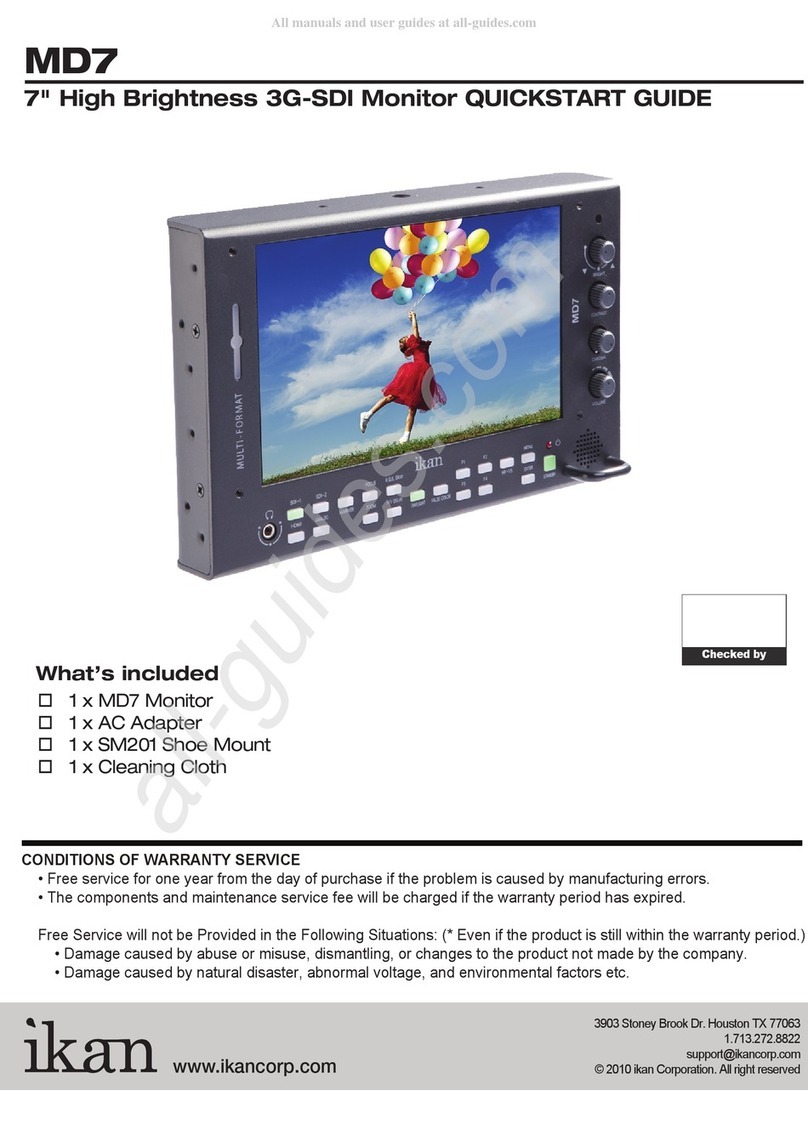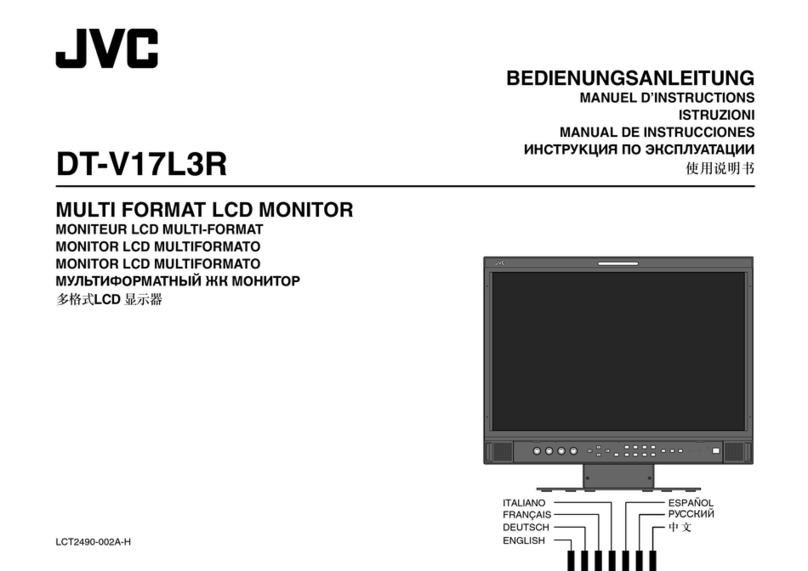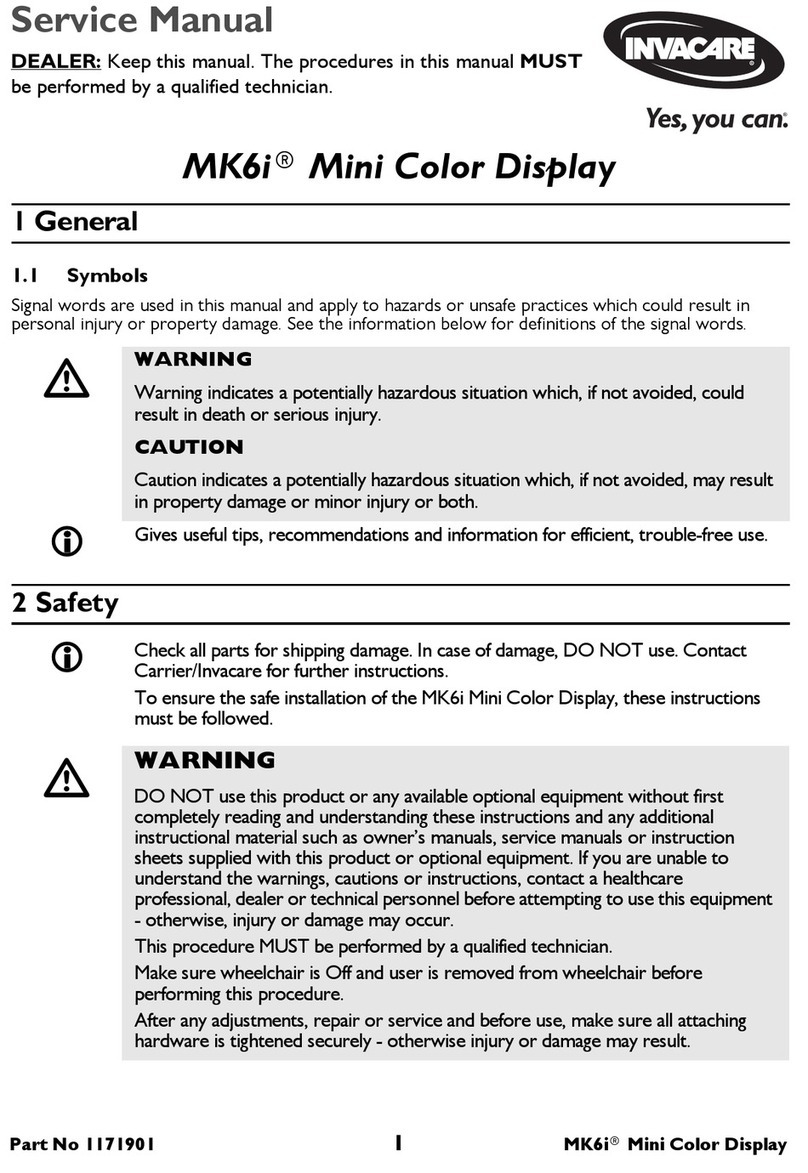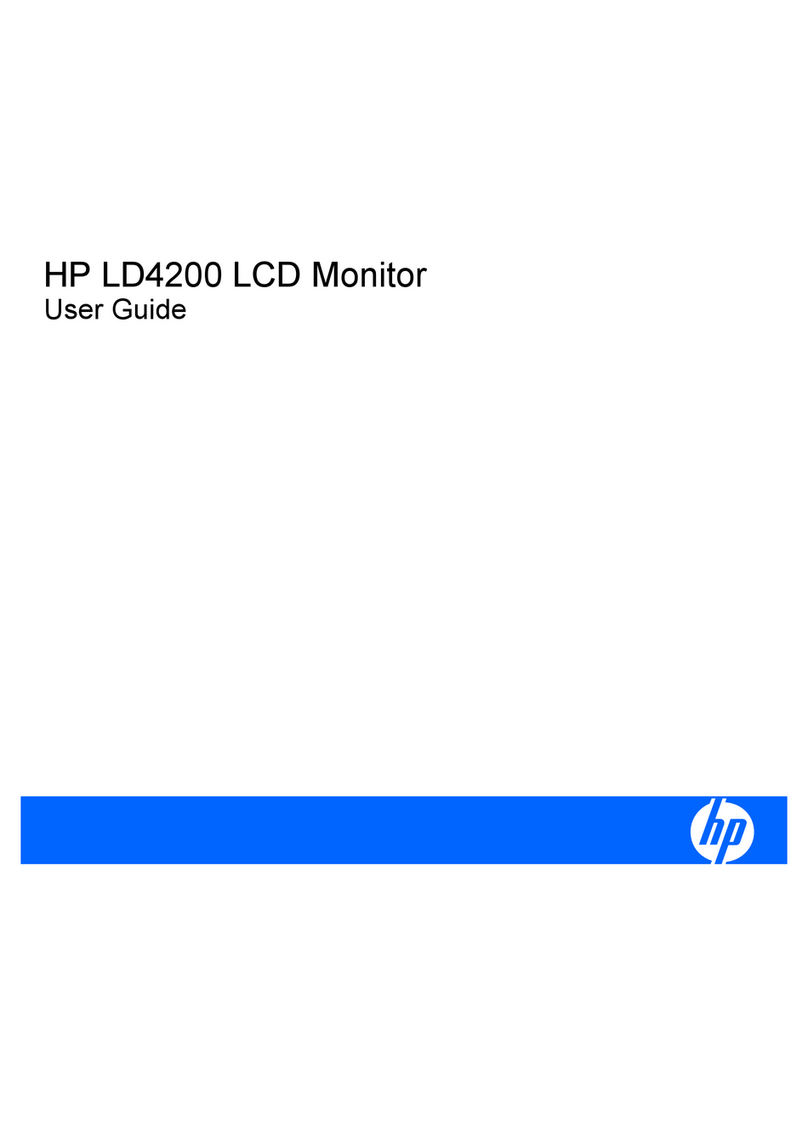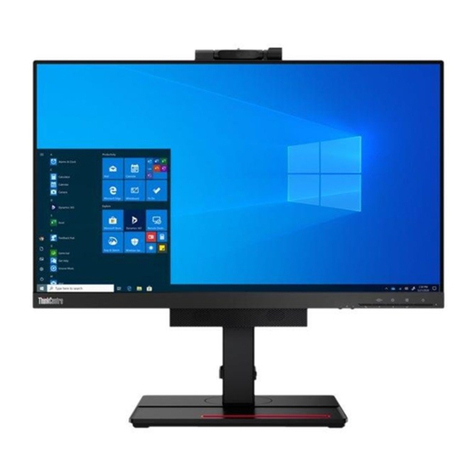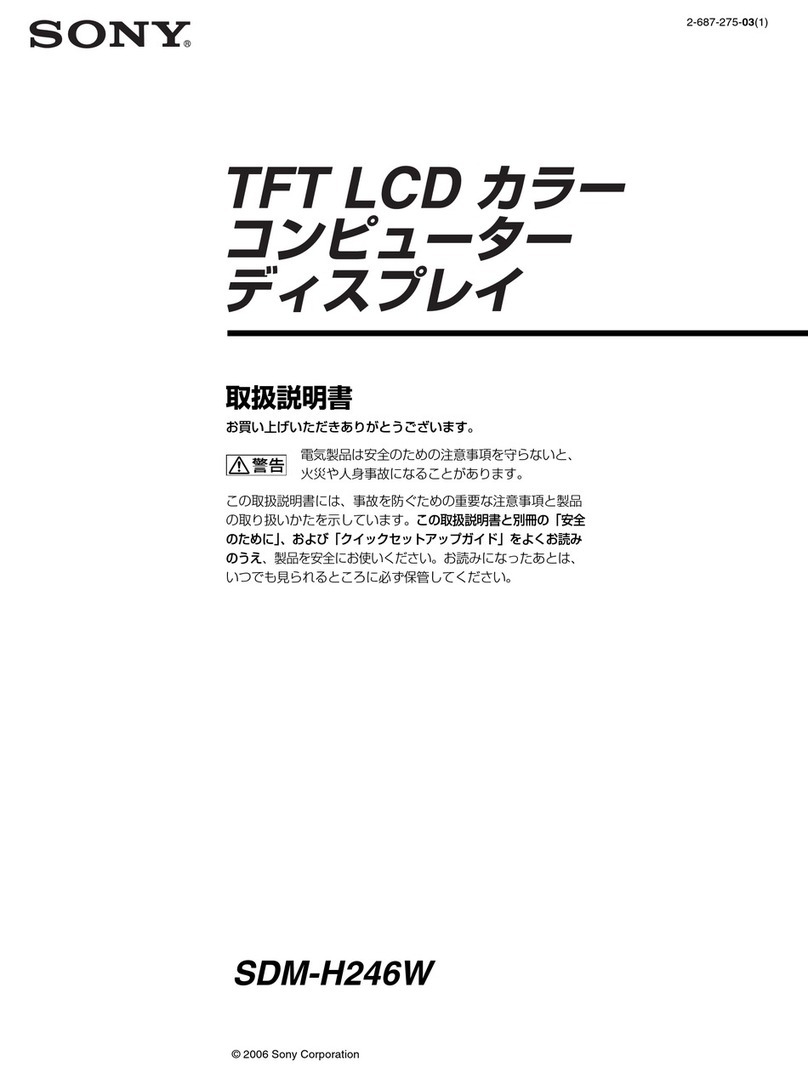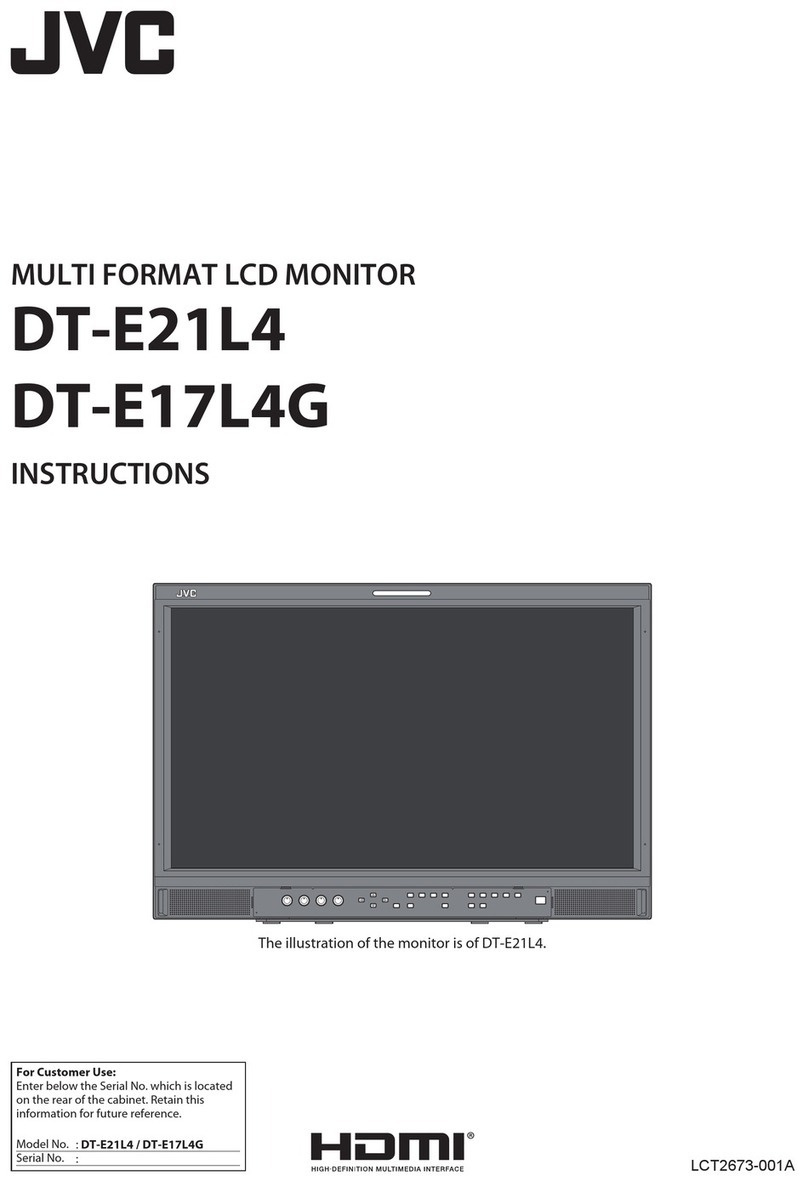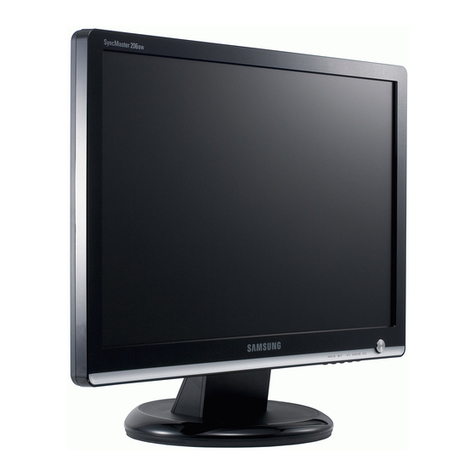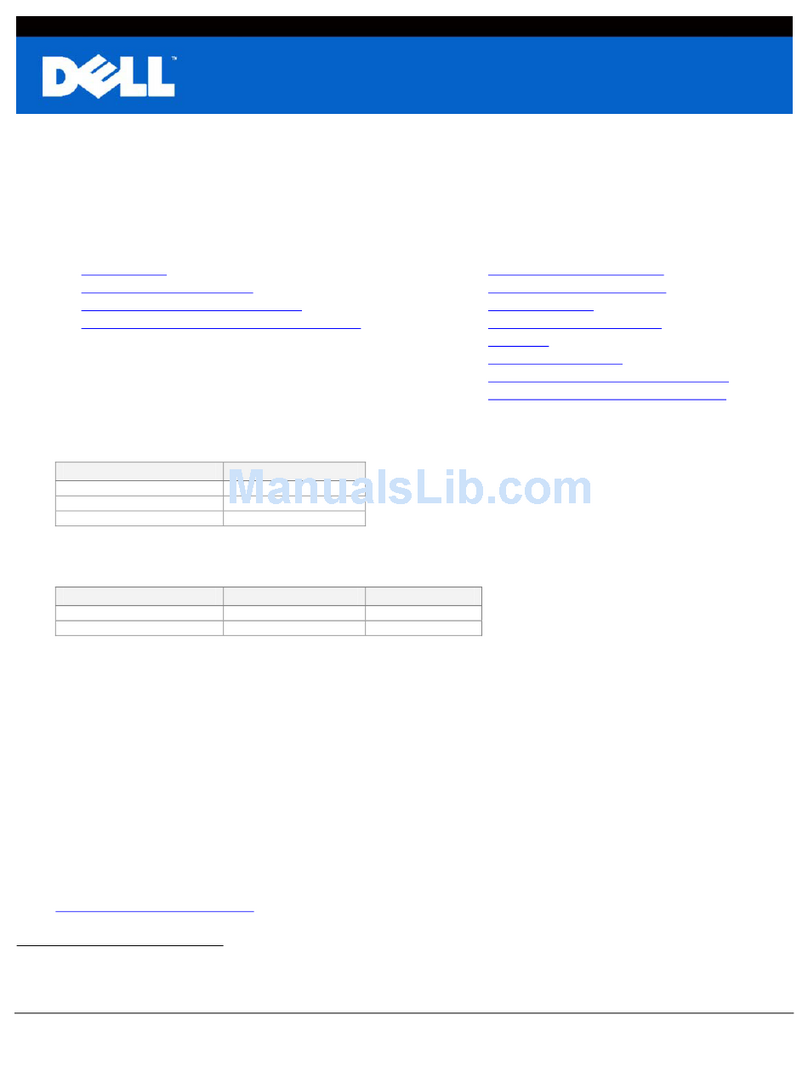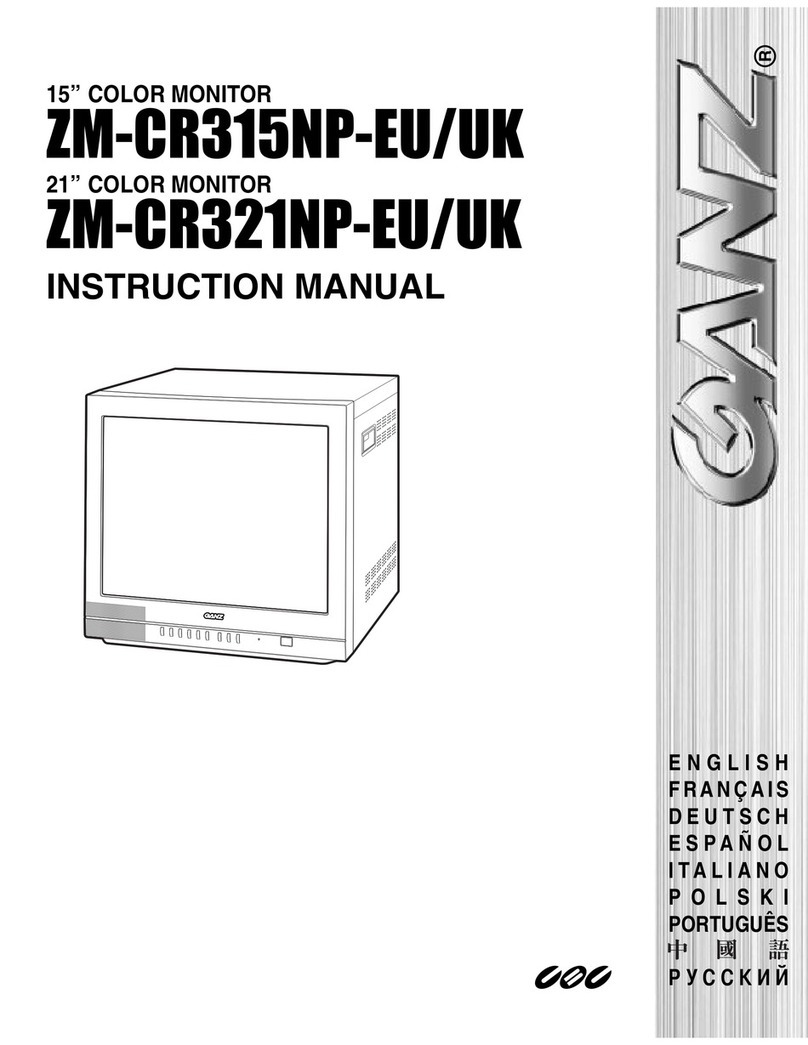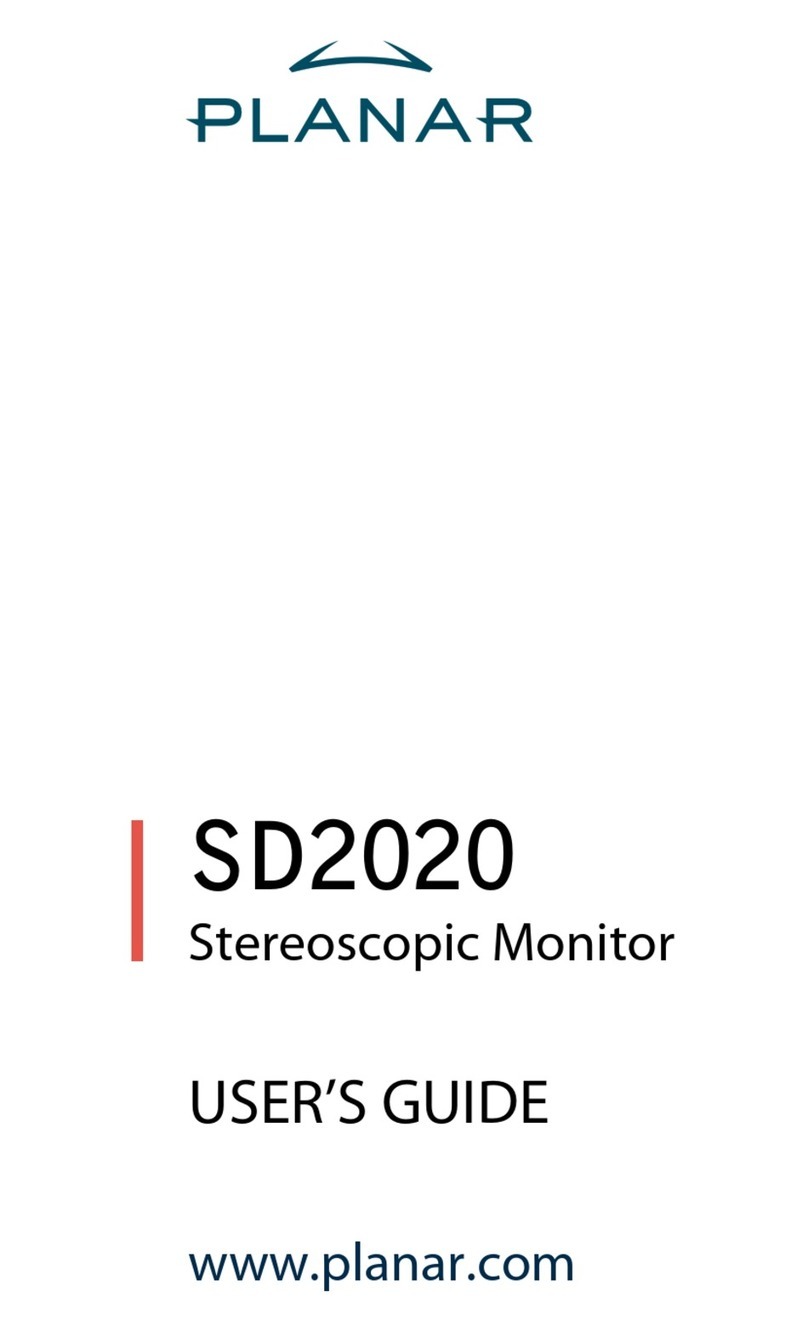Eletta D Series User manual

D-series Flow Monitor
Manual

2
2021-09-06 70C2E22
Contents
D-series Flow Monitor ...................................................................................................... 1
Manual ............................................................................................................................ 1
Contents........................................................................................................................... 2
About this Manual............................................................................................................ 4
Proprietary Rights ............................................................................................................ 4
Distributors ...................................................................................................................... 4
Customer Service.............................................................................................................. 4
1 General Information ...................................................................................................... 5
1.1 Description _________________________________________________________________ 5
1.2 Overview Control Unit ________________________________________________________ 6
1.3 Overview Pipe Section ________________________________________________________ 6
1.4 Pipe Dimensions _____________________________________________________________ 7
1.5 PED Certification _____________________________________________________________ 7
1.6 EMC_______________________________________________________________________ 7
1.7 Type Plate __________________________________________________________________ 8
1.8 Specifications _______________________________________________________________ 9
2 Installation .................................................................................................................. 10
2.1 Unpacking _________________________________________________________________ 10
2.2 Preparations _______________________________________________________________ 10
2.3 Installation of the Flow Monitor________________________________________________ 11
2.4 Installation and Changing of the Control Unit _____________________________________ 14
2.5 Separate Mounting of the Control Unit and Pipe Section ____________________________ 15
2.5.1 Separate Mounting - Installation______________________________________________ 16
2.6 Electrical Installation_________________________________________________________ 17
2.6.1 HART Protocol Specification _________________________________________________ 19
2.6.3 HART Identifying Device_____________________________________________________ 19
2.6.2 Zero based / Non-Zero based Calibration _______________________________________ 20
3 Operation .................................................................................................................... 21
3.1 Display Settings_____________________________________________________________ 21
3.1.1 Overview ________________________________________________________________ 21
3.1.2 Language ________________________________________________________________ 22
3.1.3 Settings__________________________________________________________________ 22

3
2021-09-06 70C2E22
3.1.4 Options__________________________________________________________________ 25
3.1.5 Simulation _______________________________________________________________ 27
3.1.6 Info_____________________________________________________________________ 27
3.1.7 Factory Default____________________________________________________________ 28
3.1.8 Calibrate_________________________________________________________________ 29
3.2 Change of Flow Direction _____________________________________________________ 31
3.3 Change of Flow Range________________________________________________________ 31
4 Differential Pressure Measurement.............................................................................. 34
4.1 The Differential Pressure Principle ______________________________________________ 34
4.2 Pressure Drop ______________________________________________________________ 34
5 Trouble Shooting ......................................................................................................... 36
5.1 Inaccurate Flow Prediction ____________________________________________________ 36
5.2 Spares ____________________________________________________________________ 36
6 Spare Parts .................................................................................................................. 37
6.1 BOM Drawing D-GL/FA _______________________________________________________ 37
6.2 BOM Drawing D-GSS/FSS _____________________________________________________ 39
7 Weight and dimensions ............................................................................................... 41
8 Measuring Ranges ....................................................................................................... 42
9 Recycling ..................................................................................................................... 43

4
2021-09-06 70C2E22
About this Manual
• This manual relates to the D-series Flow Monitor.
• Note that the latest version of this manual is always available as a PDF file on our web site
www.eletta.com
• On our web site you also find other interesting information such as leaflets, newsletters and
application reports.
Proprietary Rights
This manual contains confidential technical data, including trade secrets and proprietary
information, that are the property of Eletta Flow AB, Sweden.
Any changes or alterations to downloaded or printed Eletta original documentation such as manuals,
drawings, leaflets, newsletters, etc. are not permitted without a written permission from Eletta Flow
AB, Sweden.
These data are only disclosed to you under permission of limited use within your company. Use for
manufacturing or processing is not permitted.
Any other use of data and information is strictly prohibited without prior written permission from
Eletta Flow AB, Sweden.
Distributors
Eletta has appointed a number of distributors all over the world. You will find more information
about your closest distributor at our web site www.eletta.com, or by contacting our Customer
Service Center.
Customer Service
Phone +46 8 603 07 70 Switchboard
+46 8 603 07 80 Orders and Inquires
Postal Mail Eletta Flow AB
P.O. Box 5084
SE-141 05 Kungens Kurva
SWEDEN
Web www.eletta.com

5
2021-09-06 70C2E22
1 General Information
1.1 Description
The D-series Eletta Flow Monitor are used to measure and control flows of liquids and gases in
threaded pipes with sizes DN15-DN40 and flange fitted pipe sizes DN15 to DN500.
The Eletta Flow Monitor is based on the proven and dependable differential pressure principle, using
interchangeable orifice plates for different measuring ranges. The Flow Monitors are working with
two different differential pressure ranges, i.e. 500-2000 mmH2O (49-196 mbar) for the D2 and 220-
5500 mmH2O (22-539 mbar) for the D5, depending on the desired and ordered flow range and the
same goes for our models; V1 and V15, S2 and S25 and R2 and R5. Due to the working principle of
the instrument, it is of utmost importance that the installation instructions are followed carefully in
order to get the proper function of the instrument.
The Instrument mainly consists of two parts i.e. the Pipe Section and the Control Unit. The Pipe
Section is the part that is to be mounted in the process pipe and the Control Unit is mounted directly
(standard) or remote on/to the Pipe Section.
D-series is available with four different types of pipes; Threaded GL/GSS and FA/FSS for flanged
fitting.
D-GL
L
D-GSS
D-FA
L
D-FSS
L

6
2021-09-06 70C2E22
1.2 Overview Control Unit
The Control Unit mainly contains the diaphragm housing and two circuit boards (the display circuit
board and the power circuit board). The mechanical movement on the diaphragm lever created by
the differential pressure in the pipe is acting on the rubber diaphragm in the same way as our other
mechanical Flow Monitors. The lever connected to the diaphragm is acting on a linear potentiometer
placed on the power circuit board in the Control Unit. As our Monitors have a linear function
between the differential pressure and the flow, the circuit board will give you a linear flow output of
4-20 mA, HART protocol, pulse or 200-1000 Hz frequency. The difference to our mechanical V and S-
series is that in the D-series there is no mechanical linkage acting on micro switches, as the unit lacks
them, only the potentiometer giving infor-
mation to the circuit board. Since there
are fewer moving parts and less
mechanical linkage in the Control Unit,
the D-series will give you a higher
accuracy than V and S-series.
In order to get the unit to work properly with good accuracy, it is very important that the unit is
installed correctly according to the installation instruction, see chapter 2 “Installation”.
1.3 Overview Pipe Section
The Pipe Section is assembled in-line with the process pipe and the Control Unit is fitted on top of
the Pipe Section. It is also possible, for example when measuring a too hot media, to install the
Control Unit separated (using either steel pipes or tubes) from the Pipe Section, see chapter 2.5.
There are four different types of Pipe Sections; GL, GSS, FA and FSS. All Pipe Sections except FSS
contains an exchangeable Orifice Plate. The FSS Pipe Section do not contain an exchangeable Orifice
Plate since the shaft and orifice makes one integrated unit.
-GL
L
-GSS
L
-FA
L
-FSS
L
Display circuit board
L
Potentiometer
Power circuit board
L

7
2021-09-06 70C2E22
1.4 Pipe Dimensions
The Pipe Sections are available in various dimensions and materials to fit different requirements of
various applications. Following tables provide a summary of our different materials and fittings.
Threaded connections
Pipe material
Type
Available dimensions
Dezincified Brass,
CW602N/EN12420
GL15 - GL40
DN15 - DN40, ½ - 1½” BSP
DN15 - DN40, ½ - 1½” NPT
Stainless Steel
1.4470/EN10213
GSS15 - GSS25
DN15 - DN25, ½ - 1” BSP
DN15 - DN25, ½ - 1” NPT
Flange connections
Pipe material
Type
Available dimensions
Powder coated
(2022009697096) steel,
1.0060/E335/SS1650.
FA15 - FA400
DN15 - DN400, DIN PN16
DN15 - DN100, ANSI 150 lbs
DN125 - DN200, Suitable ANSI 150 lbs
DN250 - DN300, ANSI 150 lbs
Stainless Steel
EN1.4435/EN1.4401/EN1.4404
FSS15 - FSS500
DN15 - DN500, DIN PN16
DN15 - DN500, ANSI 150 lbs
Stainless Steel
254SMO/EN1.4547 *
FSS15 - FSS500
DN15 - DN500, DIN PN16
DN15 - DN500, ANSI 150 lbs
Bronze
CC491K/493K-GC/GZ/1982 *
Option
FA15 - FA400
DN15 - DN400, DIN PN16
DN50 - DN100, ANSI 150lbs
DN125 - DN200, Suitable ANSI 150 lbs
DN250 - DN300, ANSI 150 lbs
*Optional material for given types and dimensions.
1.5 PED Certification
Complies with applicable parts in Pressure Equipment Directive 2014/68/EU. Conformity
assessment has been performed according to module A. Internal production control
combined with module A2. Internal manufacturing checks with monitoring of the final
assessment, for category 2. Performed by Kiwa Inspecta AB. PED Declaration of conformity
will be sent to you upon request and are also available on www.eletta.com.
1.6 EMC
D-series Flow Monitor comply with the EMC directive 2004/108/EC through the following
harmonized standards:
- EN 61 000 - 6 - 3:2007 Generic Emission - Residential, commercial and light industry.
- EN 61 000 - 6 - 2:2005 Generic Immunity - Industry.

8
2021-09-06 70C2E22
1.7 Type Plate
Each Eletta Flow Monitor wear a Type Plate with technical data and specifications for the specific
Flow Monitor. The Type Plate is located on the top of the Control Unit shown as below.
Always check that the information on the Type Plate corresponds to what you have ordered.
The Type Plate states the following:
•Type: Model type of the Flow Monitor.
For example: D5-GL15.
•Range: Flow range of which the Flow
Monitor has been manufactured.
i.e. what the Orifice Bore has been
calculated for.
•Liquid: The media of which the Flow
Monitor has been manufactured.
For example: Water, Oil, Air, etc.
•Model: The article number of the Flow
Monitor.
•No: The serial number of the Flow
Monitor.
•Temp: The operating temperature range
allowed for the Flow Monitor.
•Max Pressure: The maximum operating
pressure allowed for the Flow Monitor.
•Protection Class: IP-classification of the
Flow Monitor (International Protection
Marking).
•Std: Pipe standard of the Pipe Section.
For example: DIN PN16/ANSI, BSP/NTP.
•CE marking and year of manufacturing.

9
2021-09-06 70C2E22
1.8 Specifications
Flow range
Liquids: 0,4-25 000 l/min, depending on pipe size
See chapter 8 “Measuring Ranges” for a table of our standard flow
ranges for water and oil
Gases: will be calculated according to application
Flow measuring range
(Turn Down)
D2-model: TD of 1:2 (50-100% Flow Range)
D5-model: TD of 1:5 (20-100% Flow Range)
Accuracy
±2% F.S. (Full scale)
Accuracy is stated as per reference and under ideal conditions i.e.
straight runs, temperature, pressure, viscosity and density. It is
recommended that you always chose the flow range of the Flow
Monitor so that the normal process flow is in the middle of the
Monitor Flow Range. For example: If you have a flow of 110 l/min
maximum and the normal flow is at 90 l/min, choose the Eletta Flow
Monitor D2 with a flow range of 60 - 120 l/min. This will give you
the highest accuracy since your flow is in the middle of the Monitor
Flow Range and will also give you a lower pressure loss
Pressure
Pressure class: PN16 / ANSI 150 lbs
Max static pressure: 16 bar (232 PSI)
Min static pressure: Line pressure of approximately 1 bar (14 PSI) is
required for proper operation
Protection class
IP65 (NEMA4)
Temperature ranges
Control unit
Operating temp: -10 to 65°C (14 to 149°F)
Higher process temperatures are achievable by remote installation
of the Control unit, see chapter 2.5 “Separate Mounting”
Pipe section
GL and FA: -10 to 120°C (14 to 248°F)
FSS and FSS: -10 to 250°C (14 to 482°F)
Power supply
24 VDC, ±1.5 VDC
Output
4-20 mA, HART protocol, pulse or 200-1000 Hz frequency (AO
update rate 20 ms)
See chapter 2.6 “Electrical Installation”
Connection cable
Shielded twisted pair, min. 0,2 mm² (0,0031 inch²)
Current consumption
Max 50 mA
Alarm relays
Two independent relays, user settable over the whole flow range
Max: 50 V AC/DC
Min: 1 mA, 5 VDC
Max switching capacity: 30 W
Materials: Diaphragm, O-
rings and sealings
NBR (Nitrile rubber), standard for GL/FA, optional on GSS/FSS
FPM (Fluorinated rubber), standard on GSS/FSS, optional on GL/FA
EPDM (Ethylene Propylene Diene), optional on all models
Materials: Spacers
GL pipes: Polyamide plastic (-10 to 120°C /14 to 248°F)
FA pipes: DN15-100 Polyamide plastic (-10 to 120°C /14 to 248°F)
DN125 –400 Stainless steel EN 1.4404 (ASTM 316L)

10
2021-09-06 70C2E22
2 Installation
2.1 Unpacking
Before installation, we kindly ask you to perform the following steps:
1) Check that there are no external damages to the outer packaging. If there are damages, check to
see if the Flow Monitor has been damaged. If there is a transportation damage on the Flow Monitor,
please contact your forwarder.
2) Check that the delivered parts correspond to the Packing list. Also check that the information on
the Type Plate corresponds to what you have ordered. The Type Plate is located on top of the
Control Unit, see chapter 1.7 “Type Plate”.
The packaging material is made of recycled environmental friendly material, and we kindly ask you
to deal with the material in a way that will have as little impact on the environment as possible.
2.2 Preparations
Before installation, we kindly ask you to perform the following steps:
1) Eletta recommends that you choose a correct position for installation of the Flow Monitor in your
pipe system. The following table serves as a guideline.
2) Check that the planned flow direction in your pipe system corresponds to the flow direction of the
Flow Monitor. The flow direction is indicated by a red arrow that is mounted on the GL/FA Pipe
Section. On the GSS/FSS version there will be an engraved arrow on the Pipe Section. If there is a
mismatch of the flow direction, we refer to chapter 3.2 “Change of Flow Direction” for instructions
on how to adjust the internal flow direction selector (GL/FA) to match the desired flow direction. It is
not possible to change the flow direction on the GSS/FSS version without ordering a new Pipe
Section, this is because the flow direction channels are fixed for the specific flow direction and
cannot be reversed.
Process Media
Correct installation
Liquid
Low level position of the system
Gas
High level position of the system

11
2021-09-06 70C2E22
2.3 Installation of the Flow Monitor
Note! Before starting the installation, please make sure that the piping is not pressurized from
flow of liquid or gas!
The Flow Monitor can be installed vertically, horizontally or angular. We do not recommend to
install the Flow Monitor upside down, this is to prevent particles in the fluid to collect in the
diaphragm housing. Please use a filter in the pipe line if you suspect the fluid to contain particles.
Below you can see the display orientations available, the display orientation will be pre-configured
according to the orientation code (A/R, B/L, C/R, etc.) that was specified upon ordering the Flow
Monitor.
It is very important that the Flow Monitor is mounted in the correct flow direction as the function of
the Flow Monitor otherwise will be prevented. The flow direction arrow that is located on the Pipe
Section denotes the flow direction which needs to correspond with the flow direction in the system.
The piping shall be rigid and vibration free. Hoses connected directly into the Flow Monitor should
be avoided as much as possible. On the rear side of the GL Pipe Section there is a threaded M6 hole
which can be used to secure the Flow Monitor on a wall or similar by using an angle bracket.
For FA and FSS Pipe Sections you can support the Flow Monitor by using rigid brackets. We
recommend installing the brackets both downstream and upstream to avoid unnecessary stress in
the installation area.
If your piping system still suffers from vibrations, we recommend a separate mounting of the Pipe
Section and Control Unit. See chapter 2.5.

12
2021-09-06 70C2E22
Installation of pipes with threaded flanges
In the case that the inner diameter of your pipes, including fittings, does not correspond to the
inside diameter of our pipes, inaccuracy may occur. Fittings with an inside diameter that is smaller
than the inside diameter of the Eletta Pipe Section may create a media jet stream of the media, this
will result in a too low differential pressure and thereby causing a measurement error. See chapter 7
“Dimension Tables” for inside and outside diameters of our different pipes.
Installation of pipes for flanged fittings
FA and FSS-versions must be aligned with the counter flanges and should not be exposed to stress
related to unevenly tightened bolts. The flanged models are delivered with two fiber gaskets which
we recommend that you use since they are dimensioned according to our pipe dimensions. Please
ensure that the gaskets are properly aligned and do not obstruct the flow.

13
2021-09-06 70C2E22
Straight runs
To obtain maximum accuracy, make sure that the system pipe has sufficiently long straight runs
before and after the installed Flow Monitor.
We recommend the straight runs to be at least 10-15 times the pipe diameter upstream and 5 times
the pipe diameter downstream.
Also make sure that there are no valves, bends or diameter changes, this is to avoid flow
disturbances which might cause an inaccurate reading of the flow.
Note!
In applications where maximum accuracy is not necessary, the lengths of the runs can be
reduced. Note that it is practically impossible to predict where and when a flow gets
stable after a disturbance. Therefore, the recommendation above serves only as a
guideline, i.e. a method that has proven to secure the measurement accuracy. If shorter
runs are used, Eletta neither can guarantee the specified maximum accuracy, nor predict
the flow in your specific application.
d
>15 x d
>5 x d

14
2021-09-06 70C2E22
2.4 Installation and Changing of the Control Unit
All Eletta Flow Monitors are designed to achieve a modular and versatile instrument. The modular
system allows you to upgrade, rebuild or add other features to your already installed Flow Monitor.
For example: if you would like to upgrade a V or S-series with mechanical micro switches to a D-
series including user settable relay switches and a mA, pulse or frequency output this is easily done.
Simply order a new D-series Control Unit to replace your old Control Unit and keep your existing
Pipe Section and orifice.
You will get the Control Unit with the diaphragm housing included. Make sure you order the right
material in the diaphragm housing and the soft rubber parts (diaphragm, O-rings and lever) and you
will get the Control Unit already tested and calibrated and ready to fit onto the Pipe Section, without
any on-site adjustments or re-calibration. All Eletta DP Flow Monitors work with the same
differential pressure within their specific range, see chapter 4.2 “Pressure Drop”.
As an option we also have a manifold with shut-off valves for versions GL/FA and GSS/FSS. The
manifold is installed between the Control Unit and the Pipe Section, this enables you to dismount
the Control Unit from the Pipe Section during full operation. If you do not have a manifold
installed, you need to shut off your system and make sure that the piping is not pressurized before
changing the Control Unit.
Note!
Before you start, make sure that the piping system is not pressurized or shut the shut-off valves if
you have a manifold installed. Turn the electric power supply off and then disconnect the cables
from the electric terminal.
On GL/FA Pipe Section
Loosen the four (4) hexagon screws that hold the diaphragm housing to the Pipe Section. Do not
remove the blue housing from the diaphragm housing at any time! Replace the flow direction
selector if damaged (available as a spare part). Install the new Control Unit and tighten the four (4)
hexagon screws firmly again.
On GSS/FSS Pipe Section
Loosen the two (2) hexagon screws that hold the diaphragm housing to the Pipe Section. Do not
remove the blue housing from the diaphragm housing at any time! Replace the O-rings if damaged
(Spares included with your new Control Unit). Install the new Control Unit and tighten the two (2)
screws firmly again.

15
2021-09-06 70C2E22
2.5 Separate Mounting of the Control Unit and Pipe Section
Sometimes, the pipe Section and the Control Unit need to be separately located from each other.
The reasons could be lack of space, high system media temperature or vibrations. The following
section explains our Separate Mounting kit.
The orifice plate creates two pressures, one on each side of the plate. These pressures are
distributed to the two pressure sensors in the Control Unit through channels in the pressure plate
and the pipe section. When installing the Pipe Section and the Control Unit separately, these
channels are extended by using two plastic hoses. These hoses are fitted between the Pipe Section
and the Control Unit using two adapters.
As a standard, two 1,75 m (5.74 feet) PA plastic hoses are delivered with the Separate Mounting kit.
The diameter is 6 mm (0,23 inch) and suitable for a maximum temperature of 90 °C (194 °F) and a
maximum pressure of 10 bar (145 PSI).
The plastic hoses shall not be used for temperatures higher than 90 °C (194 °F) or pressures higher
than 10 bar (145 PSI). If your process temperature or pressure exceeds these levels, we recommend
you to use copper or stainless steel pipes. Such pipes are not included with the product. Choose
material with respect to the type of liquid or gas in your system. If you are using a chemical reactive
media, check with your tubing supplier which is the most suitable material to use for your
application.
For a Separate Mounting you need two different adapters. One that is installed on the Pipe Section
and one for the Control Unit. The Control Unit adapter has valves for discharging entrapped air in
the tubes. There is also an angle bracket included for wall fitting.

16
2021-09-06 70C2E22
2.5.1 Separate Mounting - Installation
We recommend installing the Pipe Section and the Control Unit as close to each other as practically
possible. This will facilitate future trouble-shooting and on-site calibration.
Assemble the Control Unit adapter to the Control Unit (see chapter 2.4 on how to separate Control
Unit and Pipe Section). If Separate Mounting is ordered together with the Control Unit and Pipe
Section, the adapter will be assembled from factory.
Find a suitable place for installing the Control Unit. We recommend that the Control Unit is installed
where it is easily accessed with respect to maintenance.
Assemble the Pipe Section adapter to the Pipe Section (see chapter 2.4 on how to separate Control
Unit and Pipe Section). If Separate Mounting is ordered together with the Control Unit and Pipe
Section, the adapter will be assembled from factory.
Install the Pipe Section according to the instruction in chapter 2.3. In this case you can mount the
Pipe Section in any direction, vertically or horizontally, and with the pressure channels pointing
upwards, downwards or sideways.
When you fill up the system for the first time with liquid, please make sure that all entrapped air in
the tubes/pipes between the Pipe Section and Control Unit is removed. The air can otherwise, as it is
a compressible media, cause an inaccurate flow reading.

17
2021-09-06 70C2E22
2.6 Electrical Installation
Note! The jumper fitting only affect the Pulse/freq output.
* A (Active mA drive) Max external load 1000 ohms.
* P (Passive mA load) Max external voltage 25V.
Use 24V for HART protocol.
** J1 (Top fitted) 24V Signal out, 1000 ohms.
** J1 (Bottom fitted) Open Drain, Max 25V 1A, Non-inductive load.
*** RS422/485 COM Currently not active.
*** RS422/485 COM Currently not active.
Connect the unit according to the diagram above. Note that it is possible to release the upper part of
the connectors to make it easier to connect the cable. Use cable type shielded twisted pair, min 0,2
mm².
Display
-:Down/Decrease
+ : Up/Increase
C : Cancel
M : Menu/Confirm
Connector/Terminal
block for alarm relay L1
Connector/Terminal
block for alarm relay L2
Connector/Terminal block for outputs
Connector
/Terminal
block for
power
supply
Jumper 1

18
2021-09-06 70C2E22
All terminal block connections are to be made through the included cable gland (PG9) and please
note that you have two alternate mounting options of the cable gland depending on what side you
want to enter with the cables. We recommend the entry of the cables to be placed in a downward or
sideway direction, to avoid moisture/water to collect in the enclosure.
For HART protocol in point-to-point mode:
Connect 24 Vdc loop to connectors 4 (positive) and 5 (negative). The example below illustrates how
to connect a HART modem with internal resistance and power supply.
This next example shows how to connect a HART master without internal resistance and power
supply.

19
2021-09-06 70C2E22
For HART protocol in Multidrop mode:
If Multidrop is to be used, set the “HART Multidrop” option in the settings menu to “ON”. Then make
sure that the serial number is entered in the factory menu (see 3.1.7), this value is used to create the
HART address. The diagram below shows how a Multidrop network can be connected.
2.6.1 HART Protocol Specification
HART Revision
5
Supported Commands
0, 1, 2, 3, 6, 7, 8, 11, 12, 13, 14, 15, 16, 17, 18, 19
Multidrop
Supported, use the “HART Multidrop” setting in the settings menu
to lock the loop current to 4 mA
Default Device Tag
“ELETTA D”
Burst mode
Not supported
Default Polling Address
0
2.6.3 HART Identifying Device
The D-Series uses “0” as the default polling address, this can be used with command 0 to gather the
detailed addressing information from the device.
+
-
-pin 2
+ 24 DC pin 1
-pin 2
+ 24 DC pin 1
- pin 5
+ pin 4
- pin 5
+ pin 4
HART modem with 24 VDC
supply voltage and
250 Ohms internal
resistance
Power
24 VDC
HART master software

20
2021-09-06 70C2E22
2.6.2 Zero based / Non-Zero based Calibration
The analogue 4-20 mA output signal is pre-calibrated in our flow rig to give you a zero-based signal.
This means that you will get a fixed 4 mA reading when there is no flow and up to the minimum
measurable flow reading possible i.e. the min of the flow range determined by the Orifice Plate.
When the flow hits the min measurable flow, the signal will jump to the linear part of the signal.
For example: The D2 Flow Monitor with a turn down of 1:2 in flow will have the output signal
showing 4 mA between 0-50% of the maximum flow range and the jump up to 12 mA when the flow
hits 50% of the possible flow range. Between 50-100% of the flow range, you will get a linear output
which goes from 12-20 mA. The D5 Flow Monitor that has a turn down of 1:5, will then go from 7,2
mA to 20 mA within the possible flow range (20% - 100% flow).
The frequency signal follows the same pattern as the mA signal. A D2 Flow Monitor goes from 600 -
1000Hz within the possible flow range of the Monitor and the D5 gives you 360 - 1000Hz
respectively.
Similarly, the HART “Percent of Range” variable also follows the same pattern as the mA signal.
A non-zero based output signal can be ordered as an option, see figure below.
This manual suits for next models
4
Table of contents
